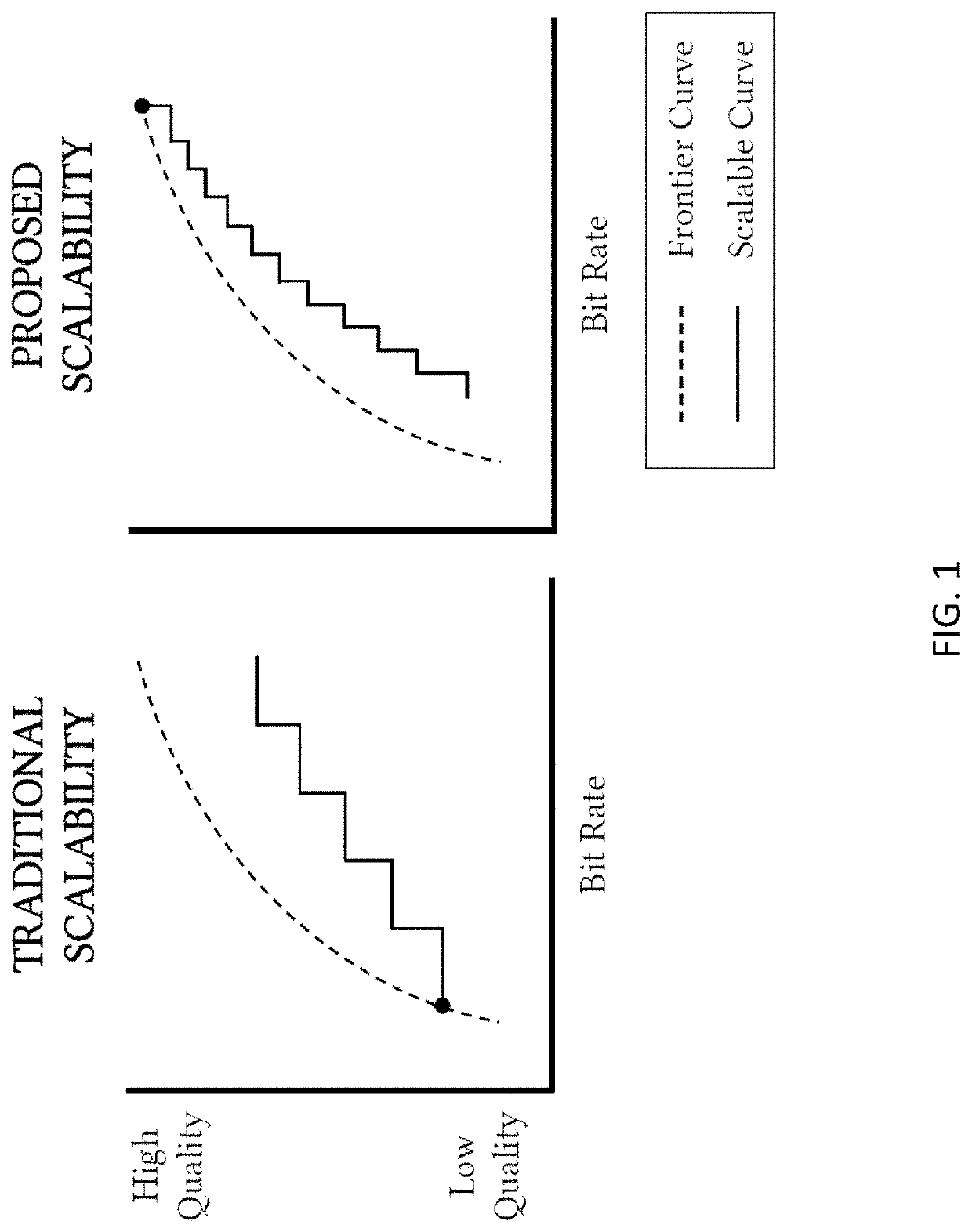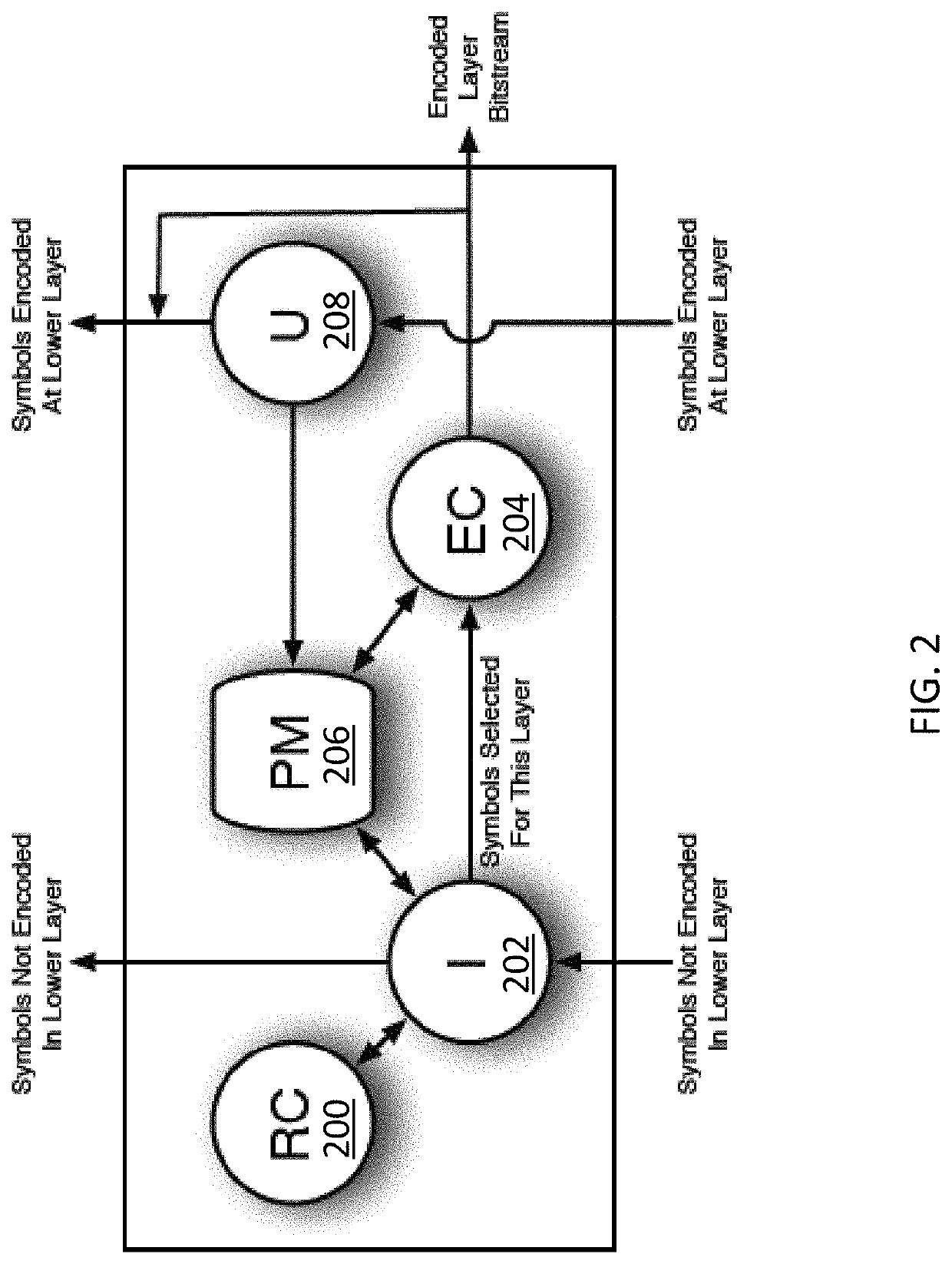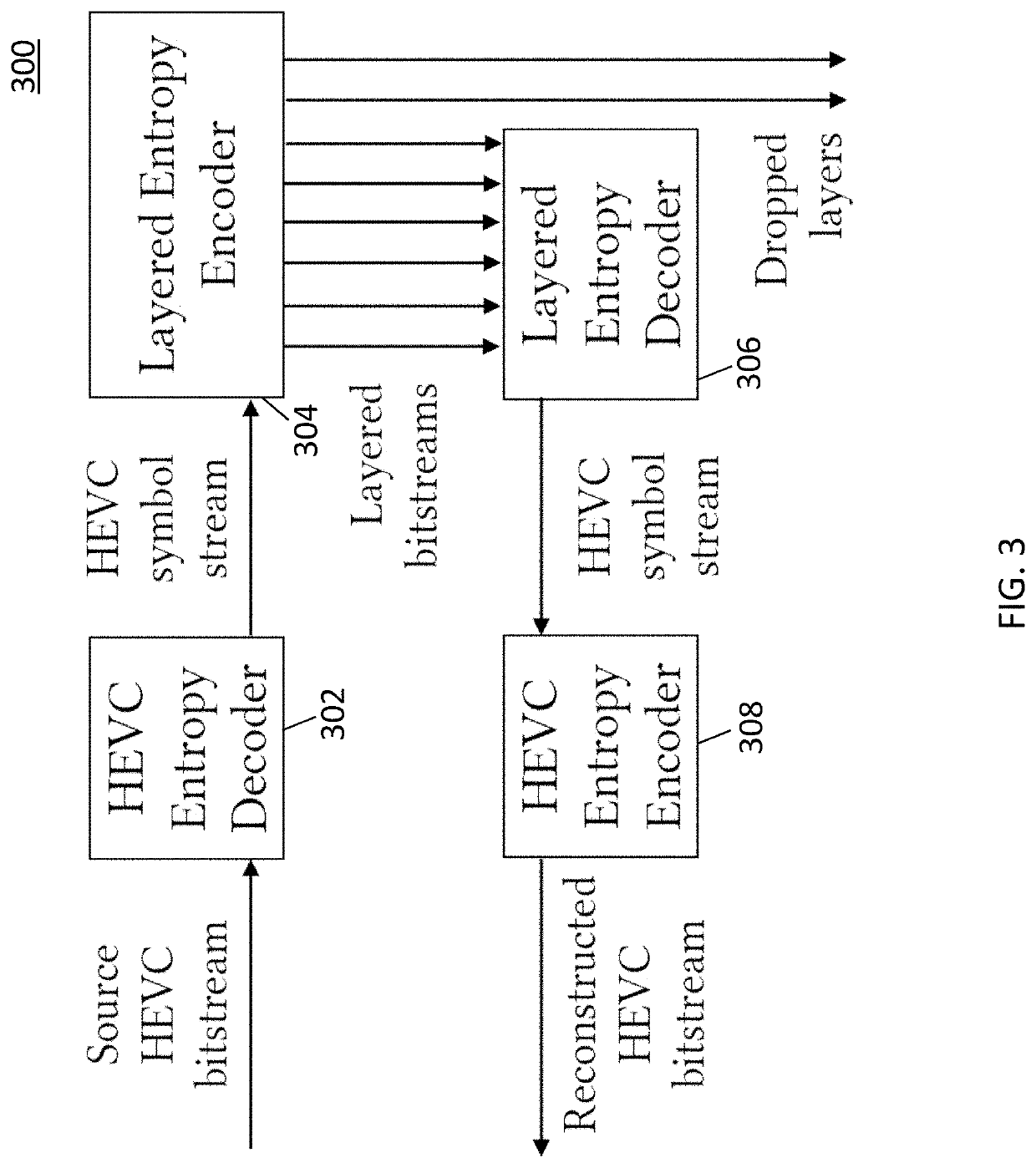Methods, systems, and computer readable media for decoding video using rate sorted entropy coding
a technology of entropy coding and rate sorted coding, applied in the field of data processing, can solve the problems of limited industry-level adoption of scalable coding techniques, limited use of scalable encoders, and low practical application prospects
- Summary
- Abstract
- Description
- Claims
- Application Information
AI Technical Summary
Benefits of technology
Problems solved by technology
Method used
Image
Examples
Embodiment Construction
[0023]The subject matter described herein relates to methods, systems, and computer readable media for using rate sorted entropy coding. The subject matter described herein discloses example techniques, methods, systems, and / or devices for performing rate sorted entropy coding and / or related aspects thereof.
[0024]Arithmetic coding is a type of entropy coding commonly used for data compression and in particular in video coding. An example method described herein uses a rate controller to sort arithmetically encoded symbols into layers (e.g., bitstreams) for transmission. The rate controller determines an effective “peak available entropy” which is compared to the potential entropy required to encode the least probable symbol value at the time a particular symbol is being considered for transmission in a particular layer. If peak available entropy is insufficient to encode the least probable symbol (regardless of the actual symbol to be encoded), the symbol is not encoded at this laye...
PUM
 Login to View More
Login to View More Abstract
Description
Claims
Application Information
 Login to View More
Login to View More - R&D
- Intellectual Property
- Life Sciences
- Materials
- Tech Scout
- Unparalleled Data Quality
- Higher Quality Content
- 60% Fewer Hallucinations
Browse by: Latest US Patents, China's latest patents, Technical Efficacy Thesaurus, Application Domain, Technology Topic, Popular Technical Reports.
© 2025 PatSnap. All rights reserved.Legal|Privacy policy|Modern Slavery Act Transparency Statement|Sitemap|About US| Contact US: help@patsnap.com



